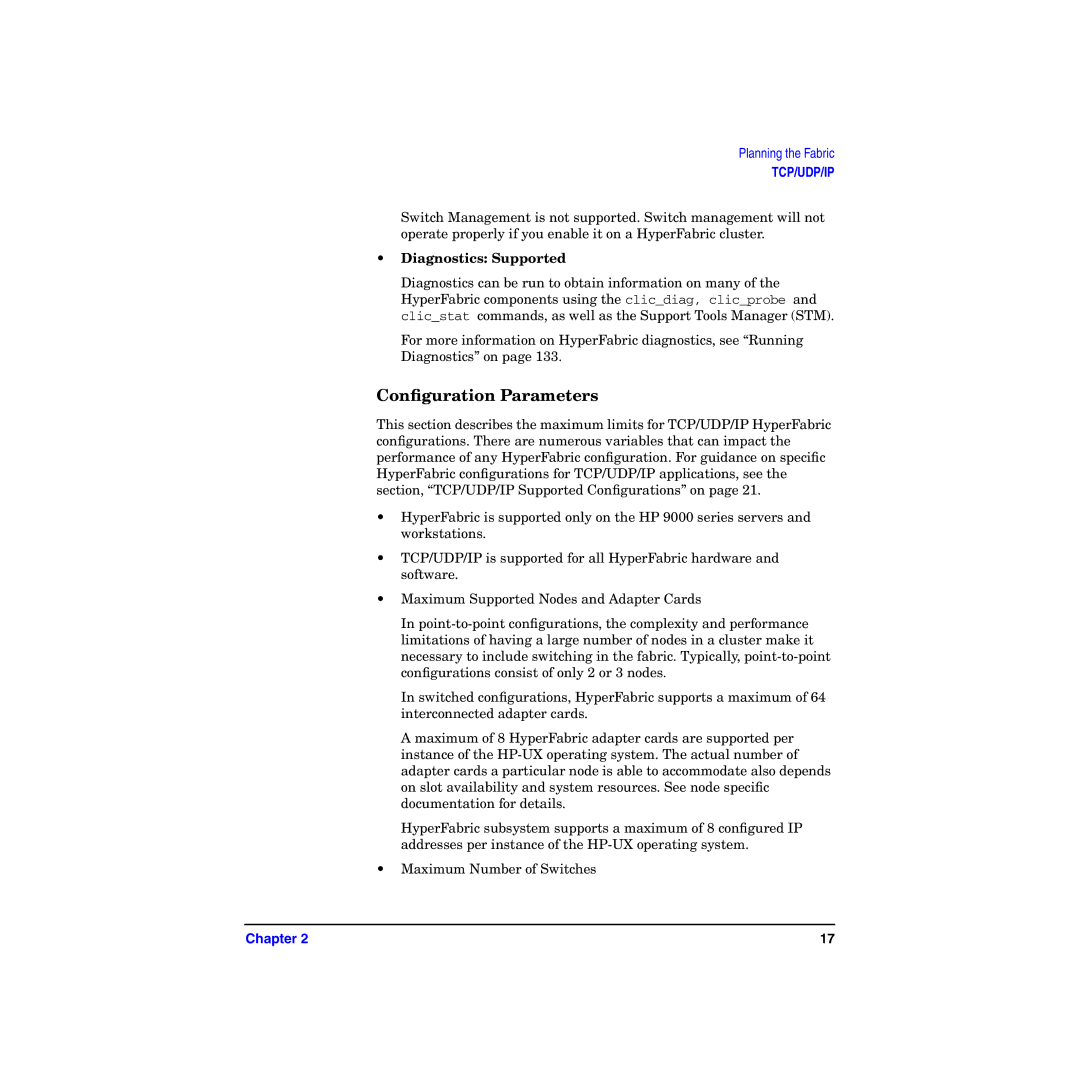Planning the Fabric
TCP/UDP/IP
Switch Management is not supported. Switch management will not operate properly if you enable it on a HyperFabric cluster.
•Diagnostics: Supported
Diagnostics can be run to obtain information on many of the HyperFabric components using the clic_diag, clic_probe and clic_stat commands, as well as the Support Tools Manager (STM).
For more information on HyperFabric diagnostics, see “Running Diagnostics” on page 133.
Configuration Parameters
This section describes the maximum limits for TCP/UDP/IP HyperFabric configurations. There are numerous variables that can impact the performance of any HyperFabric configuration. For guidance on specific HyperFabric configurations for TCP/UDP/IP applications, see the section, “TCP/UDP/IP Supported Configurations” on page 21.
•HyperFabric is supported only on the HP 9000 series servers and workstations.
•TCP/UDP/IP is supported for all HyperFabric hardware and software.
•Maximum Supported Nodes and Adapter Cards
In
In switched configurations, HyperFabric supports a maximum of 64 interconnected adapter cards.
A maximum of 8 HyperFabric adapter cards are supported per instance of the
HyperFabric subsystem supports a maximum of 8 configured IP addresses per instance of the
•Maximum Number of Switches
Chapter 2 | 17 |
